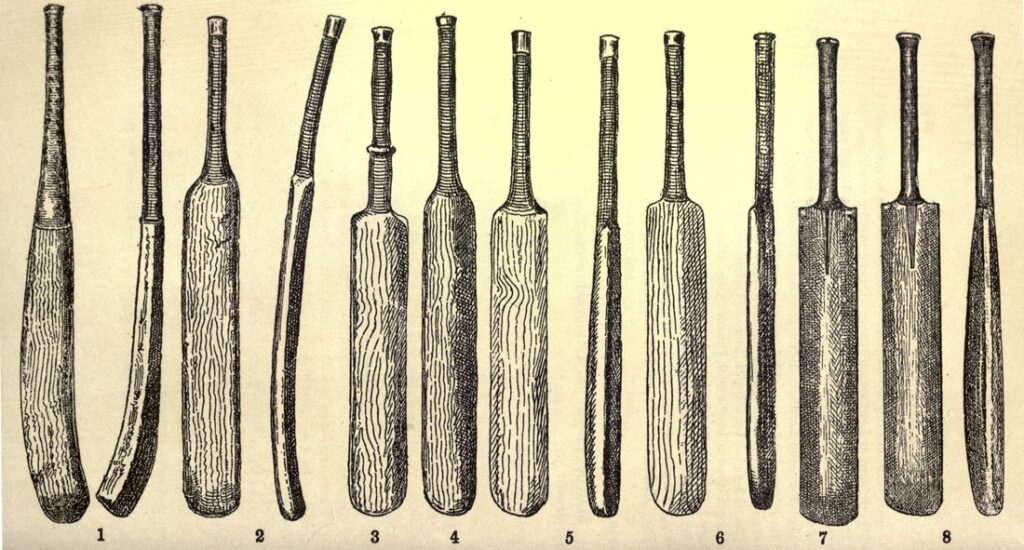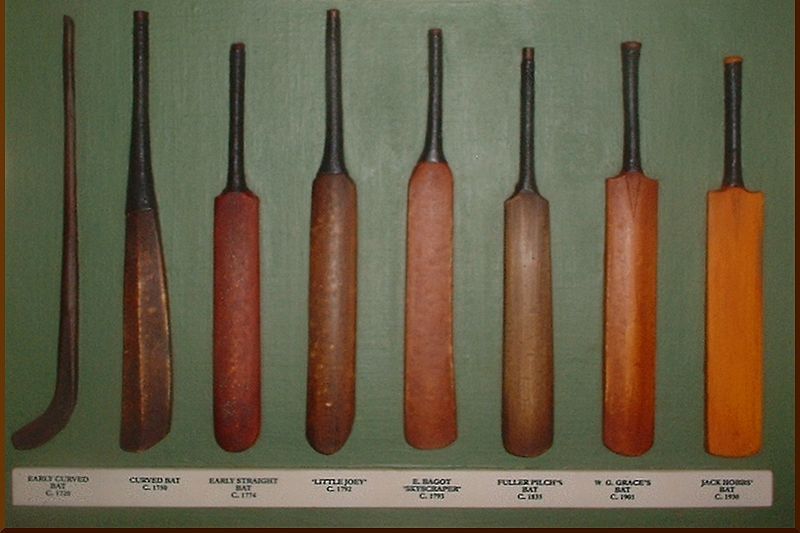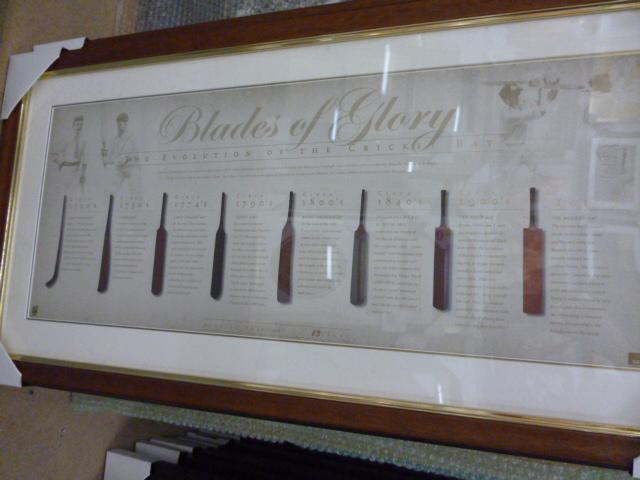HISTORY OF THE CRICKET BAT IN WORLD

2023.12.18
Timeline: 1624-1900
1624 – This is the earliest recorded reference to a cricket bat. A fielder was killed, and an inquest was held. He had been struck in the head by the batter, who had attempted to stop him from catching the ball! Bowlers used to bowl the ball underarm in the past. That’s why the cricket bat had a form that was extremely similar to a hockey stick.
1770 -: “Length bowling” was made legal again, albeit it was still done underarm. The cricket bat widened to a maximum of 4.25 inches and nearly paralleled. This holds true to this day. The “swell” in the bottom made them incredibly weighty.
1820’s – Round arm bowling was allowed, instigating more bounce so the cricket bat became lighter with a higher “swell”.
1830s: Prior to this time, all cricket bats were made of a single piece of willow. However, cricket bat manufacturers began to “splice” handles into bats due to an increase in breakages and stress as the ball traveled quicker. The handles were made of solid ash or willow.
1835 : A cricket bat’s length was limited to 38″ in 1835 this restriction still applies today.
1840 : The earliest instance of a “spring” being installed into a cricket bat’s handle dates back to 1840. Whalebone, the kind used in women’s corsets, was originally utilized for them, and then India rubber a few years later.
1853 : Cricket player Thomas Nixon of Notts popularized the use of cane in cricket bat handles in 1853.
1864: The regulations were changed to permit overarm bowling, which led to more blade lightening and improved shape. Handles evolved into complex structures, almost entirely composed of cane with rubber grips from India.
1870s: The modern cricket bat begins to take shape.
I wonder if the players of cricket in the 1600s would still perceive the game as being the same. They could appear a little perplexed by the helmets of today!
Batsmen in the game of cricket use a cricket bat. Willow wood is typically used to make cricket bats. In 1624, its use is first documented.

This custom-made cricket bat has a paddle-like form and a long, cushioned grip resembling the typically cylindrical design of a tennis racquet, but with more durability.This broadens into the bat’s blade, a broader hardwood block with a V-shaped ridge on one side to improve follow-through air flow and flat on the other. The main benefit of the v-shaped back on a cricket bat is an enhanced power to weight ratio, which is achieved by removing unnecessary wood from the bat’s central section, where the ball is usually struck, and adding strength to the bat as a whole. To hit the ball, utilize the cricket bat’s flat side, which is its front.The shoulder of the bat is the place where the handle spreads into the blade, and the toe of the bat is the bottom of the blade.
Traditionally, willow wood—more especially, English Willow (Salix alba var. caerulea)—treated with raw, or unboiled, linseed oil is used to make cricket bats. In addition to its protective role, the oil improves control by raising surface friction with the ball. This wood is utilized because it is lightweight and incredibly durable, not easily dented or splintering when hit by a cricket ball hitting it at a high speed. At the point where the handle and blade connect, there is a wooden spring design. As Brunel’s student and chief engineer of the Severn railway tunnel, Charles Richardson created the modern design of a cane handle spliced into a willow blade in the 1880s.
According to Law 6 of the Laws of Cricket, as the game’s regulations are known, a bat’s length cannot exceed 38 inches (965 mm), and its blade cannot be wider than 4.25 inches (108 mm). There is no set weight for bats, however they usually range from 2 lb 8 oz to 3 lb (1.1 to 1.4 kg). To improve grip, the handle is typically coated with a cloth or rubber sleeve, and the bat’s face may have a protective coating. The Laws of Cricket’s Appendix E contains additional detailed guidelines. Although most modern bats are manufactured by machines, a small number of experts—six in England and two in Australia—continue to create handcrafted bats, mostly for professional players.Podshaving is the craft of crafting cricket bats by hand.

This was not always the form of a cricket bat. Bats had a tendency to resemble hockey sticks in form prior to the eighteenth century. This could have been a holdover from the game’s purported historical roots. The history of cricket is shrouded in mystery, although it’s possible that the game was once played using shepherds’ crooks.
@robinson






